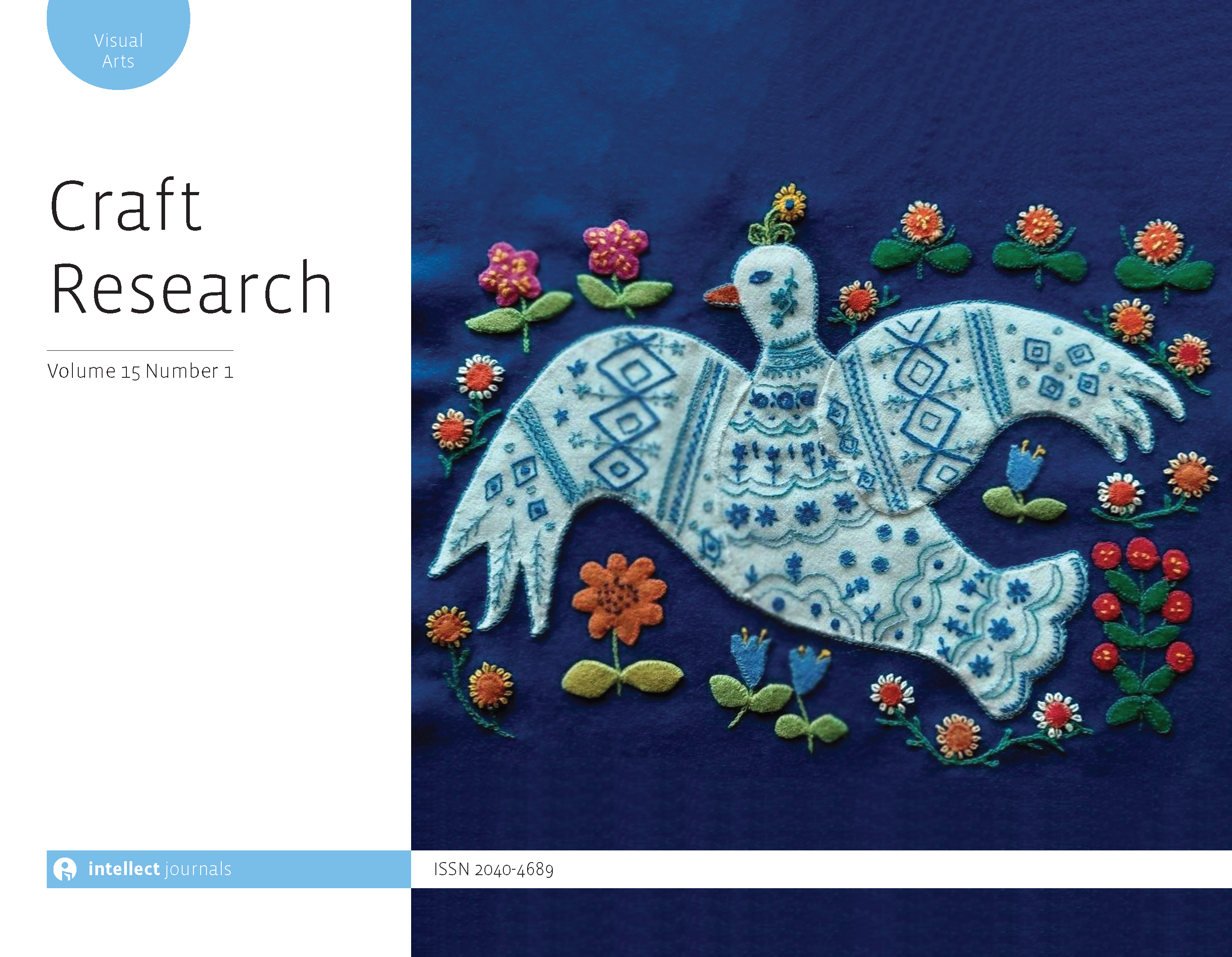
Full text loading...
 , Stephen Thompson1
, Stephen Thompson1 , Martyn Woodward1
, Martyn Woodward1
This position paper establishes a way towards a post-anthropocentric understanding of serendipity, or the happy accident, in making processes across art, craft and design. Throwing into question hylomorphic attempts to understand the application of the maker’s know-how, which devalues the enabling capabilities of the ‘happy accident’, this position paper sets a course towards a post-anthropocentric model of making. Exploring the ineffability of materials and other events or circumstances that lie outside of purposeful affordances diffracts the focus from purposeful human agency. Instead, re-understanding the maker’s process and knowledge as a transcendent intra-action between flows of material and cognition opens up space for a more subtle and comprehensive investigation into the complexity of human and non-human intra-action, which shapes the maker and the made in a reciprocal process.

Article metrics loading...

Full text loading...
References


Publication Date:
https://doi.org/10.1386/crre_00096_1 Published content will be available immediately after check-out or when it is released in case of a pre-order. Please make sure to be logged in to see all available purchase options.